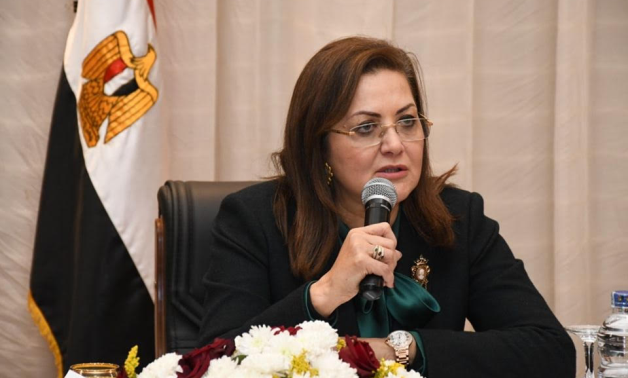
Minister of Planning and Economic Development Dr. Hala El-Said- press photo
CAIRO – 20 September 2020: Egypt’s Ministry of Planning and Economic Development issues on Sunday a report on the quality of life index and its calculation as part of the ‘Decent Life’ initiative, indicating that life in rural communities improved by 44.1 percent.
“The quality of life index is a composite one that aims to create a quantitative tool that helps measure the impact of the efforts undertaken by the state in the field of developing rural communities within the framework of the ‘Decent Life’ initiative,” said Minister of Planning and Economic Development Dr. Hala El-Said.
The report added that the situation after the interventions regarding the quality of life index reached 82 percent, with an improvement of 44.1 percent compared to the prior situation.
On the rate of coverage in sanitation services, the situation after the interventions reached 53.8 percent, according to the report, while the rate of coverage in educational services (classroom density) after the interventions reached 65%, and the situation in the coverage rate of citizens with cash support after the interventions reached about 47 percent, and 53.8 percent, the coverage rate of natural gas network services.
On a recent basis, El-Said had agreed to approve investments of about EGP 4.4 billion to implement projects within the framework of the presidential initiative: improving the quality of life in the neediest rural communities during the fiscal year (20/2021) and the 375 rural communities to exceed what was allocated to the initiative during the same year more than EGP 8 billion.
El-Said said that the index includes ten sub-indicators that express the basic needs. These indicators are the rate of coverage in health units, the rate of coverage with drinking water services, in addition to the rate of coverage with sanitation services, and the rate of coverage in educational services (the density of classes), as well as the rate at which priority families' needs are met for decent housing.
She added that the ten sub-indicators also included the rate of coverage of citizens with cash support, the percentage of paved roads, the rate of coverage with natural gas network services, in addition to the rate of coverage in sports services, and the rate of coverage by veterinary services.
Comments
Leave a Comment